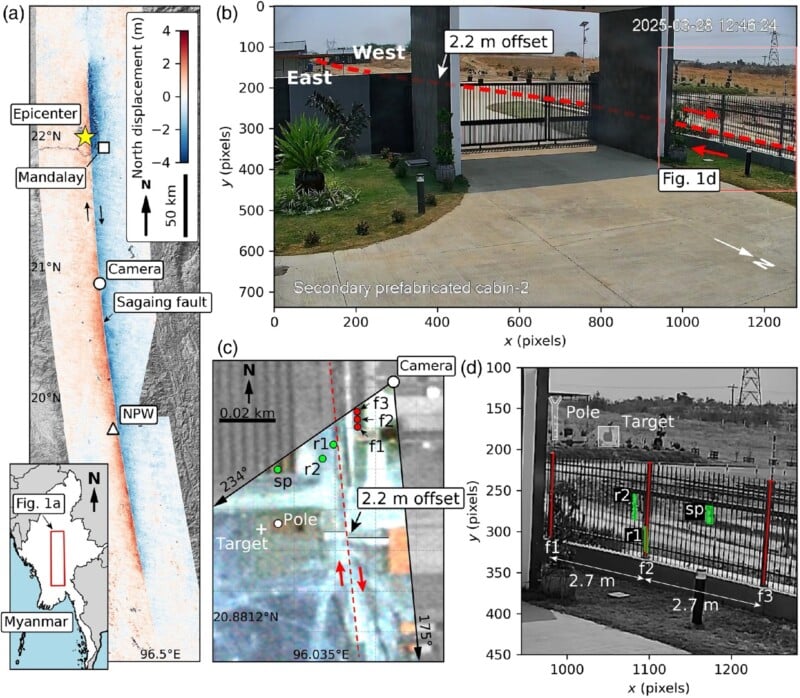First-Ever Video of Earthquake Ground Shift Continues to Astonish Scientists
A couple of months ago, PetaPixel reported on a remarkable security camera video that recorded the first-ever view of the Earth’s surface shifting along a major fault line during a massive earthquake. But further reserach has revealed it shows even more than that.
Scientists continuing to study the surreal video footage have now found that it also provides the first direct visual evidence of a curved fault slip, an observation previously inferred only from geological features.
The footage, recorded by a CCTV camera along the Sagaing Fault during the magnitude 7.7 earthquake on March 28, shows land on the fault’s western side sliding northward. It was posted to YouTube shortly after the event and quickly caught the attention of geophysicist Jesse Kearse, a postdoctoral researcher at Kyoto University.
“I saw this on YouTube an hour or two after it was uploaded, and it sent chills down my spine straight away,” Kearse tells Phys.org. “It shows something that I think every earthquake scientist has been desperate to see, and it was just right there, so very exciting.”
While the dramatic footage initially impressed researchers for simply capturing active fault slip, it was on subsequent viewings that Kearse noticed something more significant.
“Instead of things moving straight across the video screen, they moved along a curved path that has a convexity downwards, which instantly started bells ringing in my head,” he says. “Because some of my previous research has been specifically on curvature of fault slip, but from the geological record.”
Curved motion along faults had been previously suggested based on features like slickenlines — scrape marks left by past seismic activity — but had never been visually documented in real time. Working with a colleague at Kyoto University, Kearse conducted a detailed analysis of the footage using pixel cross-correlation techniques. By tracking object movements frame by frame, they measured the rate and path of the rupture.

Their analysis found that the fault slipped 2.5 meters (about 8.2 feet) over 1.3 seconds, reaching a peak velocity of 3.2 meters per second (10.5 feet per second). The slip began with a sharp curve before straightening as it decelerated. This behavior suggests that dynamic stresses near the Earth’s surface are lower than those deeper in the crust, influencing the rupture’s path.
“The curvature holds important information about the dynamics of the rupture,” Kearse adds. The findings suggest that these transient stresses initially deflect the rupture before it stabilizes. “These transient stresses push the fault off its intended course initially, and then it catches itself and does what it’s supposed to do, after that,” he says.
The research was published on July 18 in The Seismic Record.